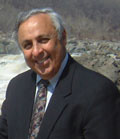|
 US
FDA : The 510(k) - Part II US
FDA : The 510(k) - Part II
In the last column, we began our discussion
of the “510(k)” submission to the FDA.
We defined “premarket
notification”, “predicate device”, “legally marketed device”,
“Substantial equivalence”, and talked about who is required to submit a
510(k). (See Archives) In this
column, we will continue the discussion of Premarket Notification (510(k))
submissions to the FDA.
When
Don’t You Submit a 510(k)?
If
your medical device is listed by the FDA as an exempt device, it is obvious
that you should not make a 510(k) submission.
It also will not help you to submit a 510(k) when a premarket
approval application (PMA) is really required!
If you do not intend to market or distribute your product
commercially in the United States, you also do not need to submit a 510(k).
You
should not submit a 510(k) if your product was on the market in the United
States before May 28, 1976 and you have not made changes since then in it in
intended use or in technological changes that could affect its safety or
effectiveness. This is because the U.S. Congress “grandfathered”
products marketed before passage of the Medical Device Amendments of 1976.
What
if you just want to distribute, under your own name, a medical device made
by a foreign company who already has a 510(k)?
Do you also need a 510(k)? The
answer is “no” because the FDA considers you a repackager or relabeler
and allows you to distribute the product to end users without a 510(k)
unless, of course, you significantly change the device or its claims.
You can put on your label “Distributed by” followed by the name
of your company. Similarly, other importers can put their names on a product
made by the same foreign manufacturer without submitting their own 510(k)s.
Another
option is for you to submit the 510(k) on behalf of the foreign manufacturer
if the foreign company agrees. When
the device has a cleared 510(k), you can market it in the U.S. The FDA will consider you a “manufacturer”.
Do
you need to submit a 510(k) if you sell unfinished devices to another firm
who then adds other components for assembling or processes the device
further? The answer,
again, is “no” unless you sell your components directly to end users for
use as replacement parts.
What
if you develop a medical device but just want to evaluate or test it. Do you
need a 510(k)? The answer is “no!”
Let us say that you want to do clinical testing and need to ship the
product to the testing facility.
Do you need a 510(k)? Again,
the answer is “no!” but, in this case you may need to make a different
submission called an “Investigational Device Exemption” (IDE).
We will talk about this IDE application in detail in a future column.
510(k)s
Come in Three Flavors!
Really,
there are three different types of 510(k)s.
Originally, there was just the “traditional” 510(k). We will
discuss the other types a little later in this column but first, here is
what happened. In 1997, the United States Congress enacted the FDA
Modernization Act of 1997 (FDAMA). This
new law incorporated ideas that were already being developed at the FDA that
fundamentally changed the way the FDA interacts with industry.
It introduced the concept of using the “least
burdensome” approach to meeting FDA requirements.
For example, Section 513(i)(1)(D) states: “Whenever the Secretary
requests information to demonstrate that devices with differing
technological characteristics are substantially equivalent, the Secretary
shall only request information that is necessary to making substantial
equivalence determinations. In
making such requests, the Secretary shall consider the least burdensome means of demonstrating substantial equivalence
and request information accordingly”.
(The “Secretary” is the Secretary of the Department of Health
and Human Resources. The Secretary delegates authority to the FDA
Commissioner).
Back
| Back To Top | Next Page
|